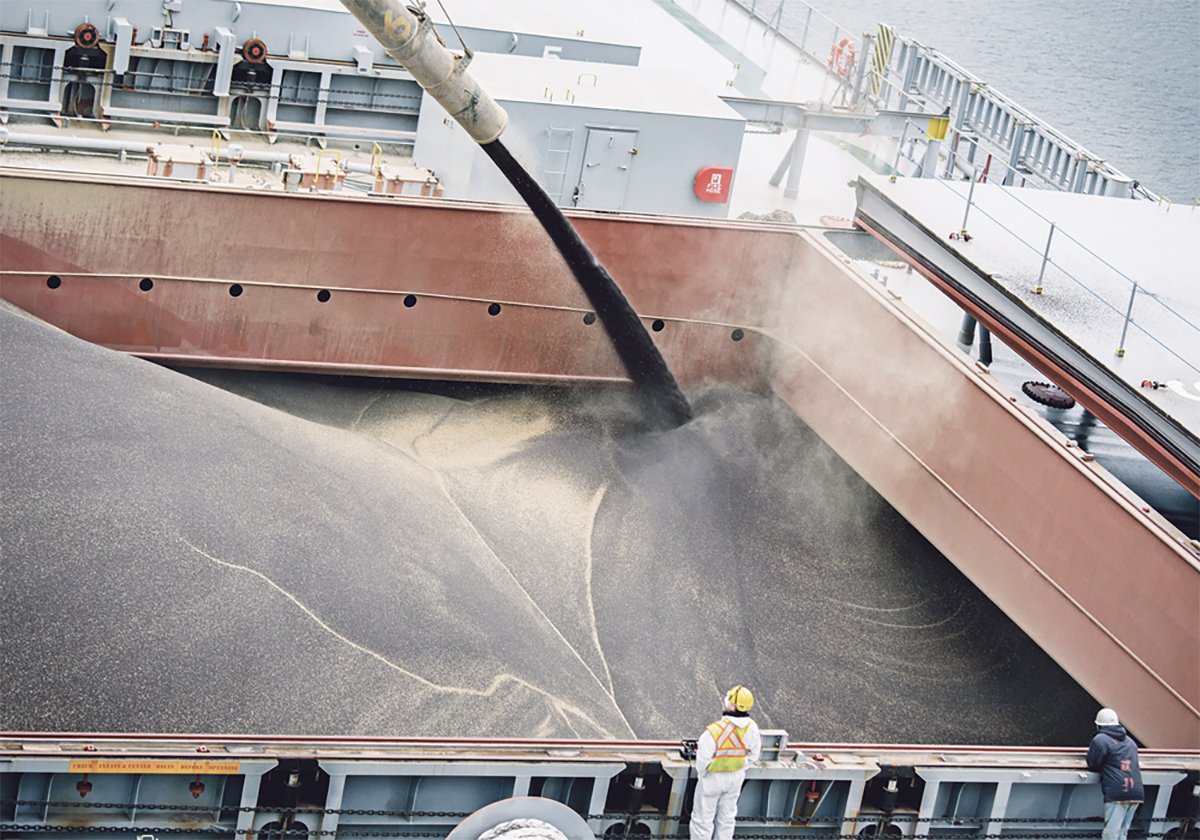China has a new goal of increasing domestic soybean production to reduce its reliance on imports, but will this latest effort be any more successful than previous tries?
It is an important question because of China’s huge standing in global soybean trade. Its imports this year, 98 million tonnes, will account for almost 60 percent of global soybean trade. Most of it comes from the United States and Brazil.
That demand helps support soybean prices, which support the price of all oilseeds, including Canadian canola.
While China is mostly self-sufficient in corn, wheat and rice, imports account for 85 percent of the soybeans it consumes. Imported soybeans are used mostly for animal feed and are vital to China’s vast hog, chicken and fish production.
Read Also

Exports off to a slow start after last year’s torrid pace
Canadian grain, oilseed and pulse exports are off to a slow start, but there are some bright spots, according to the Canadian Grain Commission’s most recent weekly export data report.
This reliance is a strategic weakness that China’s government would like to reduce.
In January, the country set a goal of increasing domestic soy production by 40 percent by 2025. That would raise it to 23 million tonnes, from 16.4 million in 2021, which was a poor year as farmers slashed soy acres by 15 percent and expanded area of corn, which was more profitable because of its superior average yields.
This year, enhanced government support for soybeans helped to rebuild the acreage closer to normal level. Production estimates range from the government’s official number of 19.5 million tonnes, to local private agricultural information provider China JCI Consulting’s 18 million.
The influential blog on China’s rural policy, dimsums.blogspot.com, has written several posts over the past year about the new soybean goals and I have drawn information from those columns.
The goal of producing 23 million tonnes by 2025 is one thing, but China’s ever optimistic ministry of agriculture forecasts that by 2031 domestic production will increase to 35.1 million tonnes and imports fall to less than 86 million tonnes, down by about 14 million from this year.
If attained, and that is a big “if”, that would be a drag on global oilseed prices.
Dimsums notes that the agriculture ministry’s long-term forecasts are usually wrong.
Nevertheless, what would have to happen for China to turn around its soybean production sector?
Soybeans and corn tend to be grown in the same area so one possibility is to shift corn acres over to soybeans. But that is risky because China’s self-sufficiency in corn is vulnerable.
In the last five-year plan issued in 2016, the goal was to shave corn area by 0.7 percent each year and push up soybean planting. At that time, China’s official statistics showed a huge reserve stockpile of corn.
As planted area shrunk, corn production failed to keep up with demand and the stocks, which were likely overstated, were soon used up. By 2020-21 China was forced to import 29.5 million tonnes of corn, up from only about 2.5 million in 2016-17. Corn prices shot up and farmers seeded more corn in 2021 and 2022, but corn imports remained at more than 20 million tonnes.
The new soybean production plan has several legs.
One is to experiment with companion planting — that is, putting corn and soybean in the same field. It will be tricky because the tall corn could shade the soybeans and there is also the issue of the equipment needed to seed and harvest a mixed crop.
How this will work on a large scale is yet to be determined.
A story in the China Daily on Oct. 18 profiled a companion planting test on a co-operative farm in Shandong province. The field was about 95 acres and two rows of corn were planted for every four rows of soybeans. That was to maximize light and air movement.
The corn yield was 172.6 bushels an acre, which is what they would expect on a single crop field. That corn yield is similar to the average national yield in the United States.
And as a bonus they got almost 30 bu. an acre of soybeans, similar to China’s national soybean yield average.
That, however, pales compared to the U.S. average of about 50 bu. per acre.
Other models with varying numbers of rows of corn and soybean were also tested.
The people quoted in the story were very happy with the results, showing potential for expanded companion cropping.
China is also targeting yield improvement with new regulations about genetically modified seeds for domestic growing. In particular, it will allow quick approval of gene-edited seeds.
Until now, China allowed imports of GM crops and domestic growing of GM cotton, but not the domestic growing of GM corn or soybeans.
New GM corn and soybean varieties might be available for planting as early as 2023, raising the potential for the country to raise crop productivity.

















